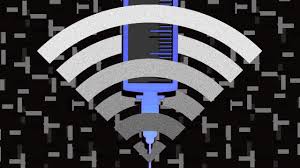26 of the 48 state Medicaid agencies studied could not report the number of “critical incidents” — such as abuse, neglect or exploitation.
You are here
Four Aging and Health Technology Blog Posts from February 2021
 Looking out toward the future – what trends matter most? The lack of broadband access among older adults is worrisome in these days of online-only vaccine registration. In years past, getting older adults online was a lower priority for senior advocates, social service agencies or healthcare organizations. News organizations rarely discussed tech adoption among seniors. And survey frequency about Internet access had dwindled over a decade. Now even the Wall Street Journal tech writer searches ways to get elusive vaccine appointments scheduled for older friends and relatives. The New York Times notes that some older adults don’t have computers. When the 2022 surveys of broadband access for the 65+ are published, will the numbers be much higher? New government efforts are underway to offer cheaper broadband -- will older adults participate? Stay tuned. Here are four blog posts from February 2021:
Looking out toward the future – what trends matter most? The lack of broadband access among older adults is worrisome in these days of online-only vaccine registration. In years past, getting older adults online was a lower priority for senior advocates, social service agencies or healthcare organizations. News organizations rarely discussed tech adoption among seniors. And survey frequency about Internet access had dwindled over a decade. Now even the Wall Street Journal tech writer searches ways to get elusive vaccine appointments scheduled for older friends and relatives. The New York Times notes that some older adults don’t have computers. When the 2022 surveys of broadband access for the 65+ are published, will the numbers be much higher? New government efforts are underway to offer cheaper broadband -- will older adults participate? Stay tuned. Here are four blog posts from February 2021:
Aging in place – it’s emerged (again) during these Covid-19 times. Déjà vu all over again. But ‘aging in place’ is still a challenge and maybe a pipe dream for seniors in their late 70’s or 80’s. Consider a few issues for starters: chronic health conditions, mobility limitations, stairs, snow/ice, driving, dangerous hills for walking, cognitive issues, and social isolation. You get the idea. Then there is the cost of 24x7 home care, same as assisted living (which is $67K/year in Massachusetts, for example) or even Genworth’s 44-hours of home care ($53-54K annual). That may work for the most well-to-do seniors. But families are still in a position of finding and then managing the care workers, even with agency assistance. So Mom or Dad stays at home as long as feasible and even beyond – and that’s why the home care industry today is booming. And competing for the same workers as senior living firms pay their CNAs.
More programs are emerging to get older adults to tech parity. Maybe 2020 was the tipping point and 2021 is the year. The first eye-opener was the OATS/Humana report about the 22 million adults 65+ who lack home broadband. Then AARP and OATS joined together to teach tech to older adults. This followed late-year 2020 activity, including the $10 million in funding for tech training company GetSetUp. And note the $18 million of funding for Papa from Comcast Ventures to combat social isolation in older adults and launch tech-enabled health offering called Papa Health. And there are efforts here and there to help seniors get or upgrade computers.
The watch changed the landscape for wearables. Since the introduction of the Apple Watch in 2014 and its subsequent sales of more than 33 million (as of 2020), Apple has been the dominant player in the US market. For the market of technology for older adults, it offered a smartwatch with built-in fall detection and other numerous health features, which it continues to introduce. By 2020, it became one of Apple’s 5 most profitable businesses and reached total adoption of 100 million globally. It changed many dimensions of life, including making people look and feel cool, reinforcing healthy behaviors -- including the importance of standing up when it notices you've been sitting too long. It made people want to track health variables they never thought they would track -- like heart rate variability, blood oxygen levels, or hand washing frequency and duration.
The home care market is (still) a booming business opportunity. Home care of various types now augments and even enhances services that not long ago may have been provided by senior housing. Pre-pandemic forecasts indicate 34% annual job growth from 2019-2029, much faster than average, and demand has no doubt been exacerbated during 2020. Home care workers are also among the lowest paying and least trained occupations. Frail patients, according to insiders, are increasingly being discharged from hospitals directly to home, bypassing rehab nursing homes. At home, these individuals likely still require assistance with activities of dressing, bathing, medication management, food preparation and household tasks. And many already at home and in assisted living need the same care.

Comments
Old School Solutions to Vaccine Distibution
Thanks for highlighting the issues with using technology to distribute the vaccine to older adults. Susan Nash is a Visiting Scholar at the Stanford Center on Longevity – she recently published a piece in Next Avenue suggesting some “old school” approaches to addressing the issue: https://www.nextavenue.org/opinion-go-old-school-with-vaccine-rollout-fo...
Randall Williams, MD via LinkedIn
Lack of broadband access for vulnerable seniors is arguably the most costly social determinant of health and wellbeing while simultaneously the simplest to address.